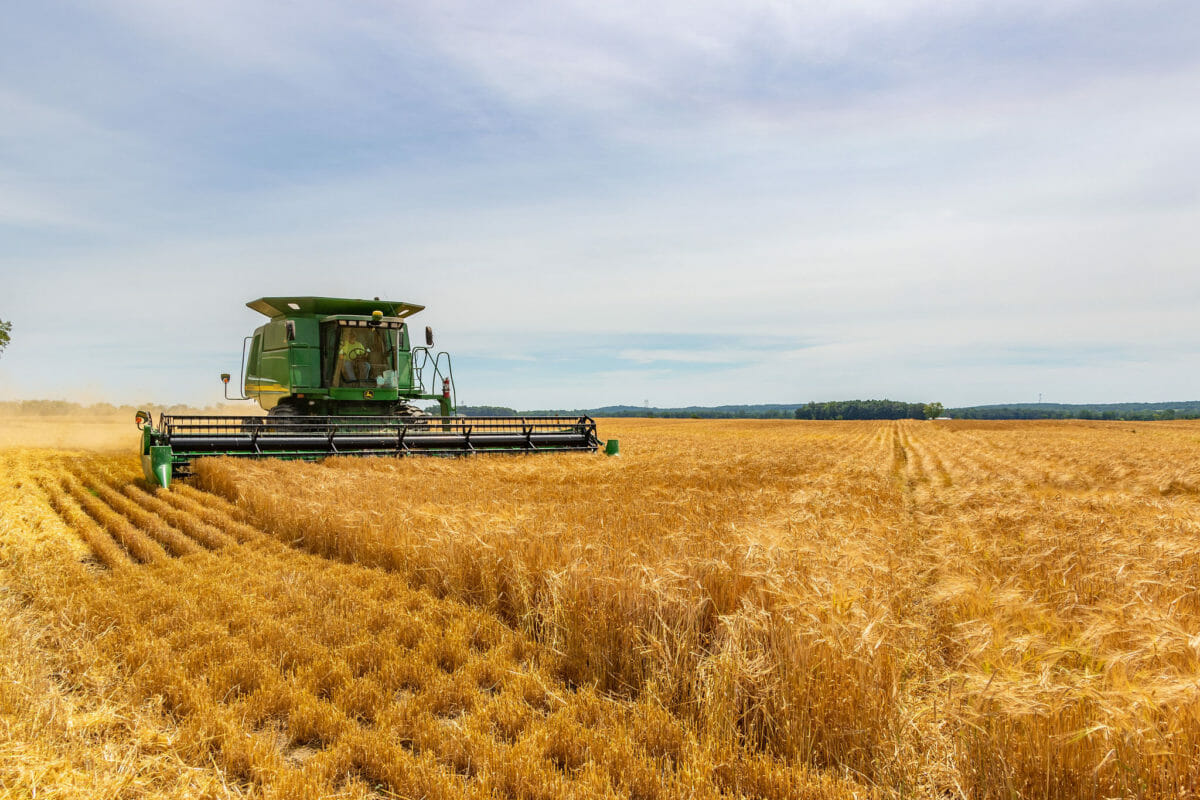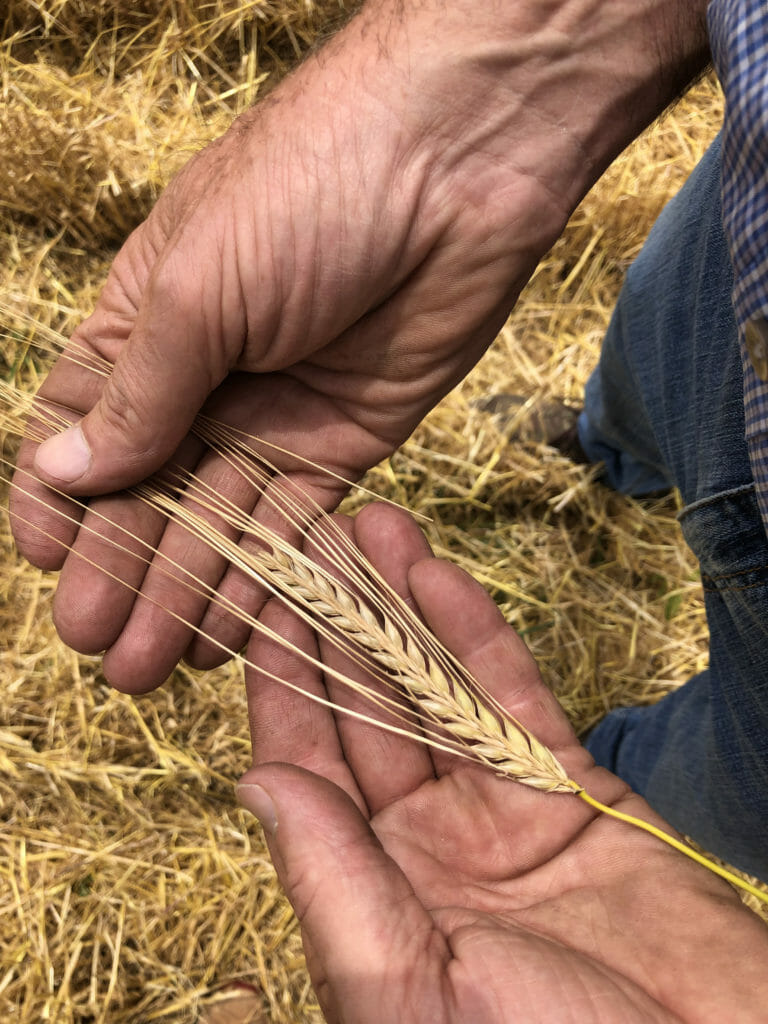In Ohio, there are nearly 300 breweries in operation, increasingly thirsty for locally produced ingredients.

Craft breweries who want to use locally grown and malted barley in the Midwest are in a bit of a predicament.
“Currently, we produce more beer than they can produce malt,” says Kelsey Stief, the director of sales at Columbus, Ohio’s North High Brewing. Half of the beers produced by Stief’s company contain barley grown or malted by the few maltsters at work in the region. The reason this figure is not higher, she claims, is because there’s not enough Ohio or Midwest malt available on the market.
In Ohio, there are nearly 300 breweries in operation. Nationally, this figure hovers over 7,000, the highest in the history of the US. Many of these makers, like North High Brewing, are increasingly thirsty for locally produced inputs for their products.
Barley, a key ingredient in beer and some distilled liquors, was plentiful in the Midwest prior to the passage of Prohibition in 1920. Nearly 350,000 acres of malting barley were in production in Ohio alone and four of the largest malting facilities in the United States were located within the state’s borders.
Prohibition decimated beer and spirit makers in the region and, more generally, the US. As these companies and the maltsters that served them shuttered their doors, growers increasingly turned to other crops for income like the corn, soybeans and wheat that now grow plentifully.
By the start of the twenty-first century, barley cultivation numbered only several thousand acres per year in Ohio alone, most of which was devoted to animal feed. Today, European production dominates the global malted barley market and many American breweries, large and small, rely on product imported from abroad.
“It dawned on me one day: Why aren’t we growing winter barley in Ohio for malting and brewing?” says Eric Stockinger, a molecular biologist at the Ohio State University with research interests in plant freeze intolerance. The academic is also a dedicated homebrewer. Since 2008, Stockinger has studied barley production in the region, trialing hundreds of varieties of the crop. This work has garnered significant interest from growers and beverage makers.

Photo courtesy of Origin Malt
“We have the ideal environment for growing winter barely for malting purposes,” Stockinger says on a cold January day from a research station in northeast Ohio. He calls the Midwest’s soil moisture levels “nonlimiting” during the crop’s seedling establishment and grain fill. Due to this, Stockinger claims, high-quality grain for malting can be obtained.
Though Stockinger has worked with spring varieties of the crop, he says that, in the Midwest, the winter species consistently produces greater yields. “Winter barley matures about one month earlier than spring barley. Grain fill occurs earlier and during cooler temperatures, which is better for carbohydrate-to-protein ratios,” Stockinger notes regarding the elements valued in the brewing process.
Additionally, winter barley fits seamlessly into overall crop rotation in the region, he points out. “Winter barley can follow soybeans,” Stockinger says, noting that in places like Ohio, spring barley competes with summer crops such as soybeans and corn. Furthermore, the crop serves as a winter cover on fields that may have lain barren in years prior, providing valuable ecosystem services such as erosion and runoff prevention, wildlife habitat and soil nutrients.
Victor Thorne, co-founder of Ohio-based Origin Malt, a start-up that supplies malt to brewers and distillers, says that he and partner Ryan Lang launched their company due to demonstrated industry demand for local supply of the product.
For the 2019-2020 growing season, the company has contracted more than 80 growers in four states to cultivate nearly 10,000 acres of malting barley for them. Origin Malt processes the harvest into malt at a partner facility and sells the product to breweries and distilleries. Over the next five years, Thorne says, his company plans to scale to at least 75,000 acres of malting barley production under contract with growers. They also plan to launch their own malting operation in central Ohio, he claims. “The ultimate goal is to have a tightly wound supply chain, so nothing has to move more than 300 miles from seed to sip,” Thorne says.
One variety Stockinger has trialed, called Puffin, originates from the United Kingdom and has appeared extremely promising in Midwest fields. Not only are Puffin’s flavor profile, consistent quality and yield potential appealing, but the crop’s ability to withstand extreme weather fluctuations has proved outstanding. “When the polar vortex hit Ohio, Puffin was the only variety that fully survived the freeze,” says Whitney Thompson, Origin Malt’s procurement manager. The company has purchased the rights to Puffin cultivation in the United States.
Meanwhile, back at North High Brewing, Stief claims that her company doesn’t source inputs locally to simply tick a box on a consumer trend wish list. Instead, she says, it’s due to economics. “We’re not paying to put it on a rail car, then a semi and finally a truck to be driven to us,” Stief says. She adds that, for her company, it’s cheaper to purchase malt from the region than to incur freight costs by ordering from a supplier across the continent or ocean.
Growers, too, have caught wind of the potential of malting barley production in the Midwest. “I’ve been growing barley for 15 to 20 years,” says Tod Crumrine, owner of Crumrine Family Organic Farms near Nova, Ohio. This year, Crumrine has 15 acres under cover. “My crop looks good,” the farmer says optimistically. Although he has yet to try the malting variety—Crumrine cultivates organic feed for sale to dairies—he notes that he’s keen to learn more as he watches neighbors successfully cultivate for an ever-expanding list of nearby distilleries and breweries.